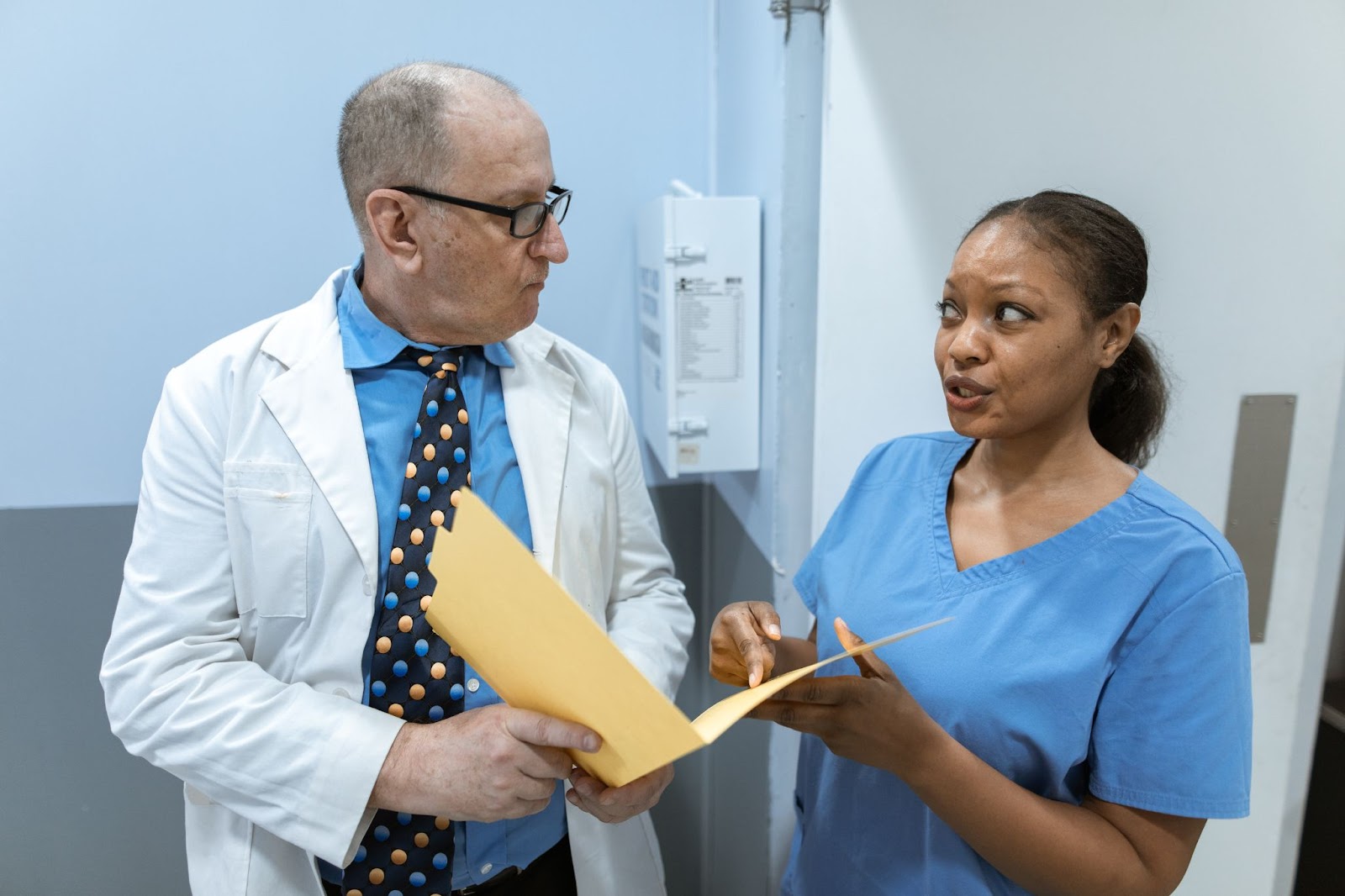
Why is feedback important?
When people fear harsh criticism from an authority, they don’t speak up. In high-stakes workplaces like hospitals, this lack of feedback can be a matter of life and death. In studies on healthcare systems, it has long been established that more hierarchical interactions between team members lead to worse patient outcomes (Feiger & Schmmitt, 1967, Nembhard & Edmondson, 2006). According to a 2003 report, “counterproductive hierarchical communication patterns that derive from status differences” contribute to many medical errors (Institute of Medicine, 2003). What this tells us is that authoritarian workplaces are actively dangerous, contributing to errors that may even lead to patient deaths.
Psychological safety is an important component that leads to higher employee voice. Employee voice is the extent to which employees speak up with concerns and feedback for an organization. In aviation and healthcare contexts, increased psychological safety and employee feedback have been shown to improve safety and reduce errors, possibly even saving lives.
According to Miao 2020, increased employee feedback in an organization leads to the following:
- Organizational innovation
- Better organizational performance
- Better team and individual performance
- Employee job engagement
- Increased creativity
Even organizations that don’t deal with life and death can benefit from increased feedback. Who doesn’t want more innovation, better performance, and creativity?
How sociocracy supports feedback at multiple levels
Creating psychological safety is important to ensuring a safe environment for employees to voice concerns without fear of negative consequences. Read this article about how check-ins and shared leadership lead to more psychological safety.
There are many ways feedback is collected in sociocracy, such as:
- Reaction rounds and objections to proposals
- Meeting evaluations
- Role improvement feedback in performance reviews
- Circular hierarchy– meaning delegates taking feedback from outer circles to inner circles
Reaction rounds and exploration rounds
In consent decision-making, there is always a reaction round where the group takes turns in a circle to hear what people think about a proposal. General exploration rounds are a time to reflect on a question or prompt, and to gather feedback. Feedback can also come in the form of objections. This feedback may lead to amending a proposal and forming a new policy. Often groups are amazed by the “magic of group wisdom” that arises in these rounds.
Meeting evaluations
At the end of every meeting, there is a meeting evaluation round. This is a time for everyone in the circle to reflect on how the meeting went, and what could be improved for next time.
Role improvement feedback
Every role-holder has time to receive feedback about their performance. At these role-improvement meetings, members of circles share what is going well and what could be improved in the focus persons’ role. Often, the positive feedback is heartwarming and leads to further feelings of connection, as well as concrete suggestions for improvement.
Circular hierarchy
In sociocracy, there is a “circular hierarchy,” because of double-linking. Delegates provide feedback from outer circles to more inner circles as they represent the interests and opinions of their circle members. This ensures a flow of feedback throughout the organization.

How we might expect the use of sociocracy to connect to these benefits
“Employee voice” is increased in sociocratic organizations through many processes. We would expect greater psychological safety and team performance to result from these processes. We would also expect sociocratic organizations to be “learning” organizations as they incorporate feedback at all levels.
This warrants further study, and we’re taking the time to look at it more closely through a survey of sociocratic organizations this summer. Stay tuned for updates in Fall 2023 on research into the effects of sociocracy on the workplace!
References
Feiger SM, Schmitt MH (1967). Collegiality in interdisciplinary health teams: its measurement and its effects. Soc Sci Med . 1979 Mar;13A(2):217-29. PMID: 441757.
Institute of Medicine (US) Committee on the Work Environment for Nurses and Patient Safety. Keeping Patients Safe: Transforming the Work Environment of Nurses. Page A, editor. Washington (DC): National Academies Press (US); 2004. PMID: 25009849.
Miao R, Lu L, Cao Y, Du Q. (2020). The High-Performance Work System, Employee Voice, and Innovative Behavior: The Moderating Role of Psychological Safety. International Journal of Environmental Research and Public Health. 17(4):1150. https://doi.org/10.3390/ijerph17041150
Nembhard, I.M, & Edmonson, A.C. (2006.) Making it safe: the effects of leader inclusiveness and professional status on psychological safety and improvement efforts in health care teams. Journal of Organizational Behavior, 27(7) 941-966. https://doi.org/10.1002/job.413


Leave a Reply
You must be logged in to post a comment.